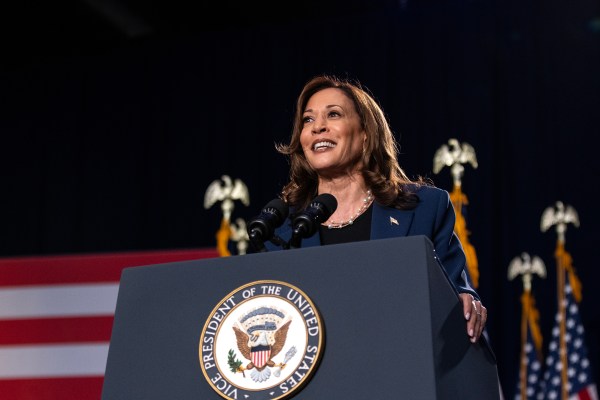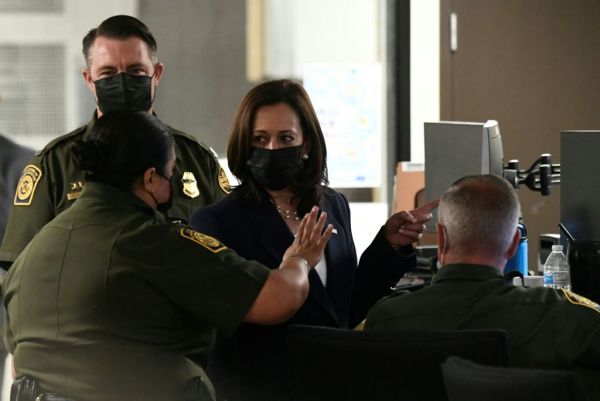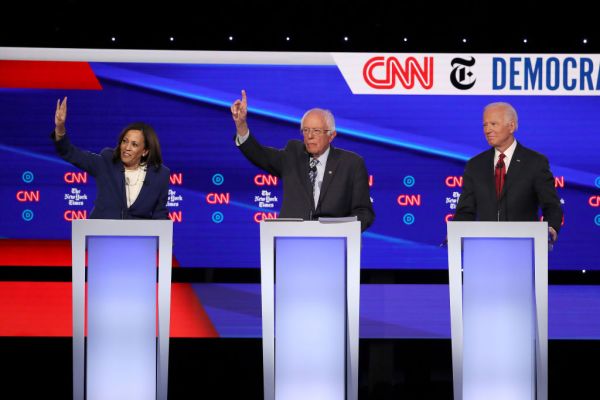When war began in Ukraine eight years ago, the speed and ferocity of the Russian advance found many—the provisional government in Kyiv foremost among them—wholly unprepared. Just days after ousted Ukrainian President President Viktor Yanukovych fled to Russia in the early hours of February, 22, 2014, Vladimir Putin’s now-infamous “little green men” moved into several strategic checkpoints and government buildings across the Crimean Peninsula.
Less than 10 months later and in close coordination with Kremlin-backed separtist movements in Donetsk and Luhansk, Putin launched a campaign of hybrid warfare in Ukraine’s eastern Donbass region. Despite attempts by the international community to impose ceasefires through the dubious Minsk accords, Ukraine’s fight against its neighbor to the north and local proxies persists.
But the Ukraine of today is not the Ukraine of 2014.
In the years since Putin’s invasion and annexation of Crimea, the Ukrainian military has expanded into one of the European continent’s largest, with more than 200,000 active duty troops and 900,000 reservists. Armed with advanced weaponry from NATO member states—including Turkish-made Bayraktar TB2 battle drones and Javelin antitank missiles—and trained by its Western partners, Kyiv’s fighting force would present Putin with a formidable opponent should he follow through with the tacit threat posed by the 130,000 Russian troops and accompanying military infrastructure concentrated near Ukraine’s borders.
And 2014 has taught Ukraine’s civilian population a hard-fought lesson in self-reliance. “Life was divided into before and after,” said Mykhailo Kulishov, a chef based in Bucha, near Kyiv. When it became clear the international community was unable to deter further aggression by Moscow, Ukrainians across the country purchased weapons, trained in urban warfare tactics, took first aid courses, and formed volunteer battalions. Their efforts have intensified amid Russia’s latest buildup.
A recent Western intelligence report, communicated to U.S. lawmakers last week, assessed that a full-scale attack by Russian forces (one that goes for the capital) could leave up to 50,000 civilians dead and trigger the flight of 1 million to 5 million refugees. The intel further estimated that between 5,000 and 25,000 Ukrainian soldiers and 3,000 to 10,000 Russian soldiers could wind up casualties in a Putin power play.
Moscow, for its part, rebuffed the now widely circulated report as “madness and scaremongering” on the part of Western media.
But actions speak louder than words, and Putin’s continued mobilization of key battalions and equipment makes it “far less likely that this is a bluff,” a Western intelligence official told NBC’s Richard Engel. Additional intel estimated that Russian ground forces, in coordination with airstrikes and cyber attacks, could topple Kyiv in a matter of days following an initial incursion.
With this “worst case scenario” in mind, Ukrainian civilians have begun to chart their next move: fight, flee, or hunker down. “We don’t panic. We just prepare,” said Olexiy Ladyka, an eastern Ukraine-based journalist for the Kramatorsk Post. “You have to understand that we’ve had the war for eight years. … It’s not something new for us and it’s not something strange for us.”
Ladyka and many others among Kramatorsk’s 150,000-plus population lived in the city during its occupation by Russian-backed militias in 2014. They have no desire to see history repeat itself. “It was a very strange world,” Ladyka, now 36, told The Dispatch. “A lot of my friends were put in prison [by the separatists]. One of them, we don’t know where he is. Maybe he was killed … eight years have passed since they took him and nobody’s seen him since that time.”
“I decided to join a local defense force,” he added. “In 2014, when the war started, a lot of people who never were soldiers … [became] soldiers. A lot of teachers and doctors, a lot of programmers—they went to the army and started to fight. They became good soldiers.”
Recent government estimates found that many of Ladyka’s countrymen and women—130,000 of them—have also volunteered to fight in territorial defense forces in cities and towns across Ukraine. Still others are preparing to fend off Russian occupation through guerrilla warfare, a tactic in which Ukrainians are well-versed after a bloody history of foreign invasions.
“We have been fighting for our independence for eight years and are already used to military news and the deaths of friends and friends of friends,” said Vitalii Ovcharenko, a blogger and activist who fought against Russian forces at the war’s start. “In the area where I live, bomb shelters are being prepared. Friends are discussing what we will do when the Russians launch a major attack. Soldiers [are] on the streets now more.”
Since it began in 2014, the conflict in eastern Ukraine has claimed more than 14,000 civilian and combatant lives. But in some areas, a relative calm has fallen over one-time conflict zones.
“By and large, life in Kramatorsk is not very different from ordinary life in other cities of Ukraine—shops are open, public transport runs, various objects are being built and reconstructed in the city,” Stanislav Chernohor, a Kramatorsk-based activist, told The Dispatch. “A small part of the people prepared backpacks and documents in case of evacuation, made arrangements with acquaintances in other parts of Ukraine so that they could go to them.”
While the 250-mile frontline remains quieter than in the past, the last three months have witnessed an uptick in sniper and mortar fire targeting Ukrainian forces as separatists in the Donbass gear up for the possibility of a Kremlin-led fight. On Monday, the head of the self-proclaimed “Donetsk People’s Republic” (DPR) told Reuters that a full-scale war in the region could erupt at any time, in which case the group would not “rule out that we will be forced to turn to Russia if Ukraine, with the support of Western countries, passes a certain line.”
The thinly veiled threat dropped, not for the first time, the veneer of the rebels’ “independence” from their Russian backers. A DPR military commander reportedly made a more direct appeal to Moscow, requesting the deployment of 30,000 Russian troops to reinforce the frontline.
Fearing that Moscow will seize any pretext to move in, the Ukrainian side remains under strict orders from President Volodymyr Zelensky not to return fire. But Ukrainians know the situation could devolve at any moment regardless of Kyiv’s restraint.
“Escalation is only a matter of time, there have always been signs,” Kulishov, 30, told The Dispatch.
Fighting in the country’s east has already led to the internal displacement of more than 1.5 million people, compounding fears that another Russian incursion could set off a wholesale humanitarian crisis.
Chernohor, the blogger and activist, heads two Kramatorsk-based nonprofits. He said his teams developed contingency plans for the possibility of renewed combat. “We developed an evacuation plan, established collection points, and discussed scenarios for our activities in case of intensification of hostilities,” he said. “We now have about 450 pallets of various humanitarian supplies in stock, which we are delivering to hospitals … And, of course, we continue to look for partners and philanthropists to improve the delivery of humanitarian supplies directly to the affected population.”
While he remains optimistic that such preparations are purely precautionary, Chernohor underscored the feelings of unease created by the Kremlin’s volatile leadership.
Stirring hysteria among Ukrainians has thus far been a defining feature of Putin’s overall strategy, despite Moscow’s public lip service to de-escalation. In 2022 alone, more than 300 fake bomb threats of likely Russian origins have forced the closures and evacuations of schools across the country. “The goal,” Ukraine’s security service wrote, “is obvious—to create conditions for additional pressure on Ukraine, to sow anxiety and panic in society.”
Highly coordinated disinformation campaigns, cyber attacks targeting critical infrastructure and official websites, and attempts to infiltrate government positions are among the other ways Russia destabilizes its neighbor.
After enduring eight years of psychological and hybrid warfare, Ukrainians are exhausted but resolute. “We want to live in a peaceful country. We want to go to work. We want to go to the park with our kids,” said Ladyka, the journalist preparing to fight in the event of a Russian attack. “We don’t want any war. We just want this to stop. ”
“Ukrainians oppose Russian tyranny and fight for their independence every day. Ukrainians did not want and do not want to fight but we have no choice—we are forced to defend [our] young democracy and [our] values and [our] families,” said Ovcharenko, the blogger who took up arms to defend against Russian aggression in 2014. “We will continue to fight.”









Please note that we at The Dispatch hold ourselves, our work, and our commenters to a higher standard than other places on the internet. We welcome comments that foster genuine debate or discussion—including comments critical of us or our work—but responses that include ad hominem attacks on fellow Dispatch members or are intended to stoke fear and anger may be moderated.